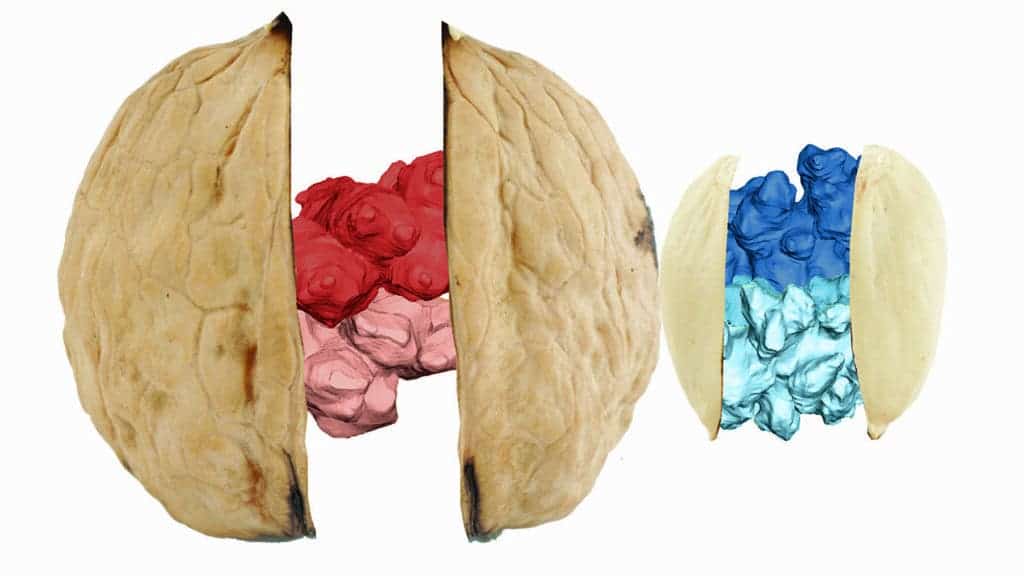Imagine yourself happily cracking your way through a big bowl filled with semi-opened pistachios. There’s no stopping. You thumb off the shells and eat the nutmeats and all is fine — until the very last ones. The ones that won’t open easily. As you grab a pistachio that is firmly locked you think to yourself you won’t be able to open it. There’s a good reason why it’s such a tough nut to crack — and researchers have figured it out.

The pistachio (Pistacia vera), a member of the cashew family, is a small tree originating from Central Asia and the Middle East. The tree produces seeds that are widely consumed as food around the world. In 2019, global production of pistachios was about 0.9 million tonnes, with Iran and the United States as leading producers.
While delicious, their shells can be difficult to open. Now, a group of researchers from the University of Natural Resources and Life Sciences in Vienna have studied this in unprecedented detail. According to their study, the nuts are encased in a microscopic structure of interlocking cells so tightly bound that they never let go of each other. In a nutshell, the cellular structure of the pistachio makes it a very strong material.
“These tissues achieve a holy grail of materials science,” Naomi Nakayama, a bioengineer at Imperial College London not involved in the study told Science. Rigid materials like glass tend to break easily, while tougher ones are more flexible. “But these [shells] have achieved stiffness and toughness in combination,” Nakayama said.
The researchers spent years looking at the biomechanics of pistachio shells to understand what makes them so hard to crack. In a previous study, they discovered the secret of walnut shells: 3D puzzle-shaped cells with interlocking lobes. Last year they discovered the cells in pistachio shells also have those lobes, which triggered their curiosity.
Most nutshells have several kinds of cells, but walnuts and pistachios only have one kind. To find out how tough these cells are, the researchers carried out an experiment, looking at broken fragments of walnut and pistachio shells at a nanoscale. They used state-of-the-art equipment, including infrared microscopes and micro-computed tomography scanners to peer into the essence of the pistachio shell..
Pistachios were collected in June and September 2019 from Kerman, Iran. Walnuts were harvested in July and October 2018 in Vienna. All samples were frozen right after sampling to retain their native state and minimize chemical changes. The researchers investigated thin-walled (porous) and thick-walled (dense) tissues of both species.
As those in the walnut shells, the cells in the pistachio shells hook up with 14 neighboring cells, the researchers found. The cells in both shells have tough cell walls packed with spiraling coils of microfibers. But the lab tests showed that the pistachio shell material is much stronger, likely because its cells have three times as many lobes as walnut cells.
That gives them 30% more surface area to lock on to one another, the researchers reported. The pistachio cells are connected through ball-joint structures, similar to human hip joints. This makes the pistachios “the master of geometrical cell interlocking,” Notburga Gierlinger, a biophysicist and one of the authors of the study, told Science.
There could also be an added bonus to this study. The properties of the pistachio shells could make them perfect to create shock-absorbing devices, such as car bumpers and safety helmets, according to the researchers. That’s because they can take the energy of an impact and redirect it away from the object to be protected, bending or stretching instead of breaking like other materials.
The study was published in the journal Royal Society Open Science.









